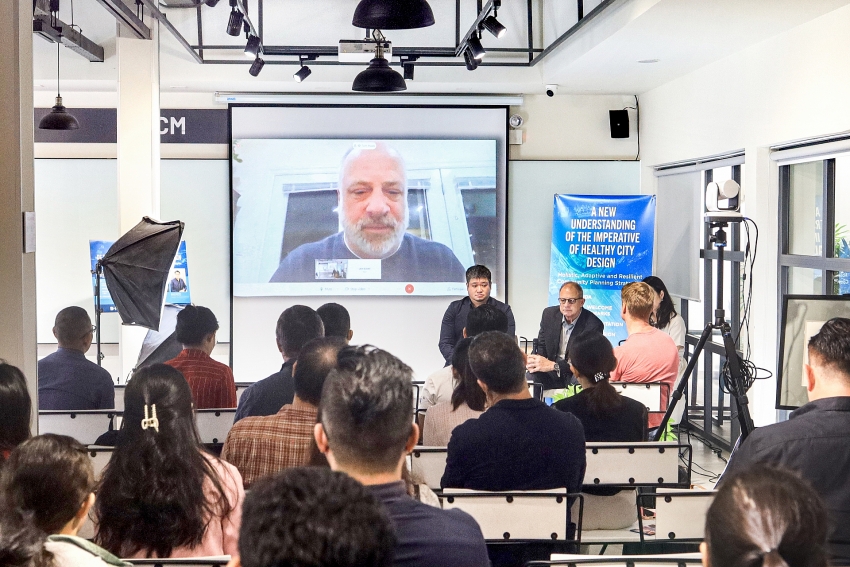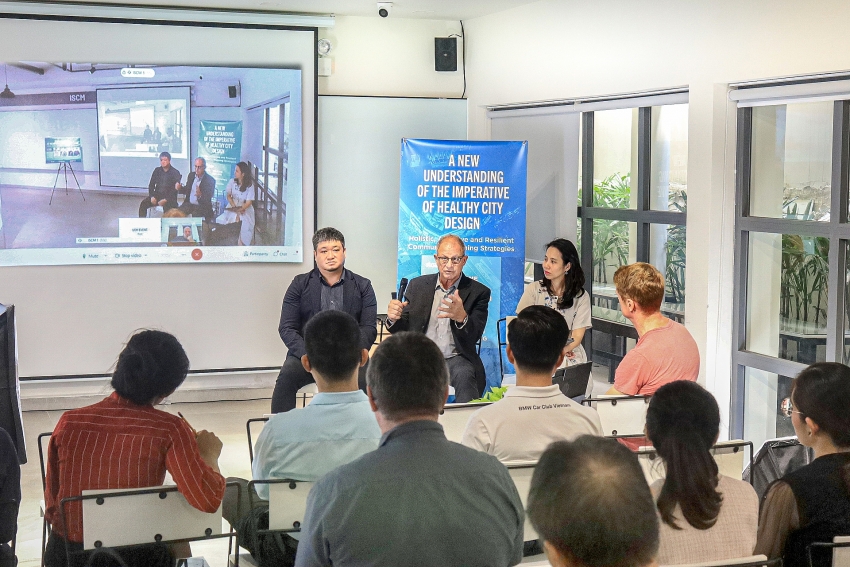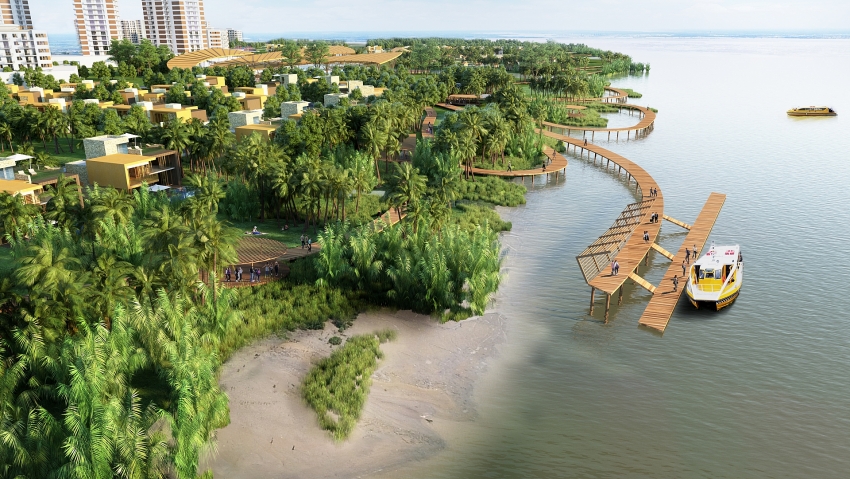The future of sustainable and healthy city design in Vietnam
 |
| B+H Asia director of planning Steven Townsend discussed critical disruptors for building healthy and sustainable cities in an uncertain future |
At the virtual seminar held in Ho Chi Minh City with a parallel live online session, B+H Asia director of planning Steven Townsend discussed critical disruptors including climate change, urbanisation, and the digital revolution that will affect how people build healthy and sustainable cities in an uncertain future.
Townsend also showed that with 70 per cent of the population living in coastal areas and low-lying deltas, Vietnam is highly exposed to riverbank and coastal flooding and is one of the world’s most vulnerable countries to the effects of climate change. Last year’s abnormal typhoons cost Vietnam $1.3 billion in damage and killed at least 192 people. An estimated 7.7 million people in nine provinces, including 2.5 million children, were affected – with hundreds of thousands of houses flooded, damaged, or destroyed.
Tom Hook, B+H global director of Planning and Landscape, shared integrated strategies and new planning principles designed to test solutions for future flexibility, adaptability, and resiliency when shaping spaces, communities, and the cities of tomorrow.
 |
Regarding B+H’s approach to planning, Tom noted, “One of B+H’s fundamental planning principles is blending biomimicry with planning and landscape design to uncover new models that are shaped to last by harnessing free energy, redundancies, and cyclical processes.”
Hook continued to explain that the creation and maintenance of man-made systems, products, and processes often require a great amount of energy. Biomimicry uses natural systems to inspire innovation by addressing challenges, reducing the environmental impact of development, and maintaining a sense of social responsibility.
At the webinar, Quan Nguyen, the company’s director of Planning and Landscape in Vietnam, used the example of 200-hectare Hamlet Waterfront Development in Dong Nai province as a prominent urban planning project case study that applied biomimicry principles to create a resilient community.
 |
“A biomimetic approach preserves the environment by working with the forces of nature to create a greater level of sustainability and resiliency. Through phased planning and development aimed at increasing access to and within the site via waterways, linear parks, streets, and walkways, the long-term vision positions the development as an active urban centre,” Nguyen said.
Under the engaging discussion, global and Vietnamese experts shared their viewpoints on the effects of climate change, urbanisation, and the digital revolution on livelihoods and the need to rethink how cities are built based on relationships, nature, and the built environment.
Attendees included local and international academia; practitioners, scholars, and students in architecture, urban design, and planning; Vietnamese planning experts; professional planners from Singapore Planning Institutes, and more besides.
The event, jointly hosted by B+H and the University of Economics - Institute of Smart City Management at in Ho Chi Minh City, provided the attendees with essential information and statistics on holistic planning strategies and solutions for building tomorrow’s healthy, sustainable, and resilient communities. The session was moderated by Dr. Trinh Tu Anh, director of the institute.
Last year, B+H and ISCM established a strategic collaboration with the aim to enhance training programmes, and research and development initiatives towards smart city building, as well as to address urban issues through real-world applications. The seminar was a component of an ongoing relationship formed to encourage the type of knowledge sharing that contributes to more resilient and healthy city design.
As one of the first Canadian design firms to establish a presence in Vietnam in 2010, B+H embraces opportunities to work with trusted partners and clients in designing innovative solutions and services that will elevate the quality of design and construction in the country. Notable large-scale urban planning projects B+H has carried out in Vietnam include Song Chanh Riverside Eco-Urban Town, Eco Urban Development Southwest of Ba Ria, Tam Da Smart City, Phu Yen River Tourism Town New City, and Kien Thuy Eco Urban Development, to name a few.
What the stars mean:
★ Poor ★ ★ Promising ★★★ Good ★★★★ Very good ★★★★★ Exceptional
Related Contents
Latest News
More News
- The Kross ascends in Ho Chi Minh City's business heart (October 10, 2025 | 17:16)
- ESG-driven sustainability to define Vietnam’s green real estate (September 19, 2025 | 11:35)
- Tan Thuan Tower open for high value-added and innovative tenants (September 10, 2025 | 10:00)
- The new home of modern business at Hanoi's Starlake (August 19, 2025 | 08:00)
- Forum focuses on financial solutions for ESG in real estate (June 18, 2025 | 12:12)
- Frasers Property Vietnam moves towards green real estate leadership (May 08, 2025 | 11:25)
- Keppel collaborates with leading brands to enhance urban living in Vietnam (April 04, 2025 | 09:26)
- Strengthen partnership and efforts to promote zero energy buildings in Vietnam (February 26, 2025 | 17:31)
- Haus Dalat ESG real estate project holds opening ceremony (February 24, 2025 | 11:12)
- Best golfers awarded at Swing for the Kids 2024 (October 13, 2024 | 08:00)

 Tag:
Tag:





















 Mobile Version
Mobile Version